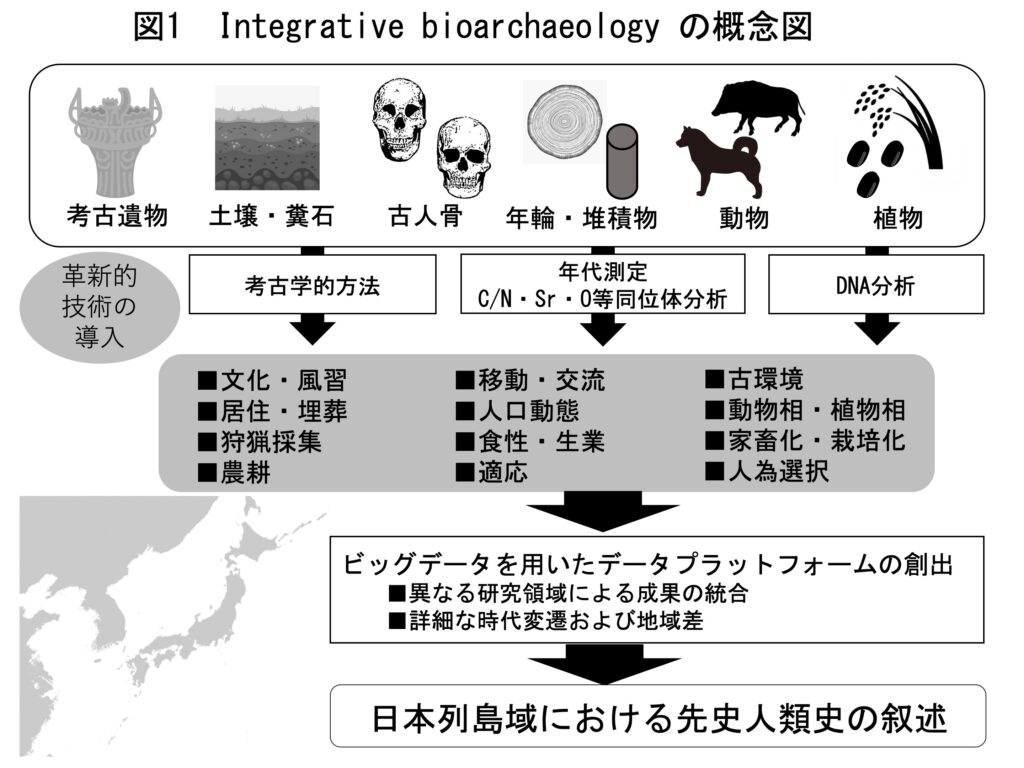In the archaeology of the prehistoric, Paleolithic, Jomon, Yayoi, and Kofun periods in Japan, there are many issues that cannot be solved only by archaeological methods with analysis of natural remains. It is no longer possible to extract highly probable research results without physical and chemical analysis. For example, reading highly verifiable social structures from graves, domestication of animals, restrating the process of cultivation and agriculture of plants, reconstructing the paleoenvironment of archaeological sites.
This situation indicates that both research and education in archaeology can no longer be covered only by conventional humanities field. Therefore, it is necessary to create and construct a new academic framework that integrates archaeology and natural science as comprehensive knowledge, and there is an urgent need to train researchers who can handle such hybrid research.
In addition, conventional collaborative research between archaeology and natural science has often been divided into separate fields, such as archaeology and anthropology, or archaeology and botany. There has been little research in Japan that integrates various isotope analyses and DNA analysis.
In this area of research, we would like to advocate the creation of integrated bioarchaeology, so-called a field in which research is conducted by integrating human remains, animals, plants, and other materials based on archaeology.

The research organization in this research area consists of four groups: the General Group (Group Leader: Yasuhiro YAMADA), which oversees the overall research; Group A (Group Leader: Yasuhiro YAMADA), which creates, refines, and universalizes analytical methods to reconstruct prehistoric human society; Group B (Group Leader: Ryosuke KIMURA), which studies the arrival and spread of humans in the Japanese Archipelago and the process of the emergence of regional characteristics; and Group C (Group Leader: Naoki OSADA), which studies the interrelationship between humans and the environment (paleoenvironment, fauna, and flora) and provides feedback to the reconstruction of human society.
General Group: Generalizing and coordinating the entire project
Group A : Analysis of prehistoric human societies in the Japanese Archipelago
Group B : Prehistoric Human Diffusion and Regional Formation in the Japanese Archipelago
Group C : Formation of paleoenvironment and adaptation of prehistoric humans in the Japanese Archipelago

Within the three groups A, B, and C, there are a total of 11 planned research groups, each of which has its own role and aims to integrate the humanities and sciences.
In order to avoid excessive fragmentation of research content and to deepen interactions among researchers and integrate research content, we have established a system to promote mutual interactions among the A, B, and C research groups by having them share research themes and promote their study. The shared research themes among the groups are as follows
Group A ⇔ Group B : Elucidation of the regional development process of prehistoric humans
Group A ⇔ Group C : Elucidation of the complexity process of prehistoric humans
Group B ⇔ Group C : Elucidation of the environmental adaptation process of prehistoric humans

